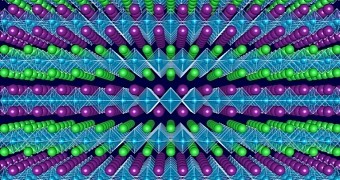Solar cells usually have an efficiency of just 11-15%, though some recent breakthroughs promise to raise that level to 45%. Now, a team of researchers believe they have discovered a new material that is ideal for solar cell creation, even compared to all others attempted thus far.
Researchers at Northwestern University have found out how to use a very common type of semiconductors, transition metal oxides to be specific, in the making of solar cells.
The band gap in a semiconductor has a great stake in determining the effectiveness of a chip or circuit. In a nutshell, band gap indicates how much energy an electron needs to be fed before it can start conducting electricity.
~0 eV means a material is a conductor, ~1–9 eV means semiconductor, and ~9 or more eV means insulator.
The NU scientists have found a way to tweak the band gap in transition metal oxides. Admittedly, this could be done already, but only by one electronvolts (eV).
The new method can modify the band gap by two eV without changing the material composition. They used quantum mechanics to pull it off.
The ideal band gap for single-junction solar cells is (theoretically) 1.34 eV. There are no materials capable of this in nature, none that man has found, but now we might be able to create one from the ground up.

 14 DAY TRIAL //
14 DAY TRIAL //